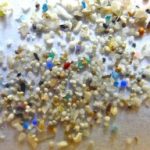
We all know that to manage our finances effectively, it helps to have a plan…aka budget. With that being said, many high school students and young adults have no idea how to do this. If you teach any courses, classes or units that include adulting or financial literacy, this Salary to Budget Hyperdoc is a must to get them ready for life! Initially, the hyperdoc puts the learning in the hands of the students as they independently work through the basics about budgets before applying what they’ve learned in a simulated budget, paper plate visual project, using a randomly assigned occupation and salary. Learn more as you continue reading.
Read more →











